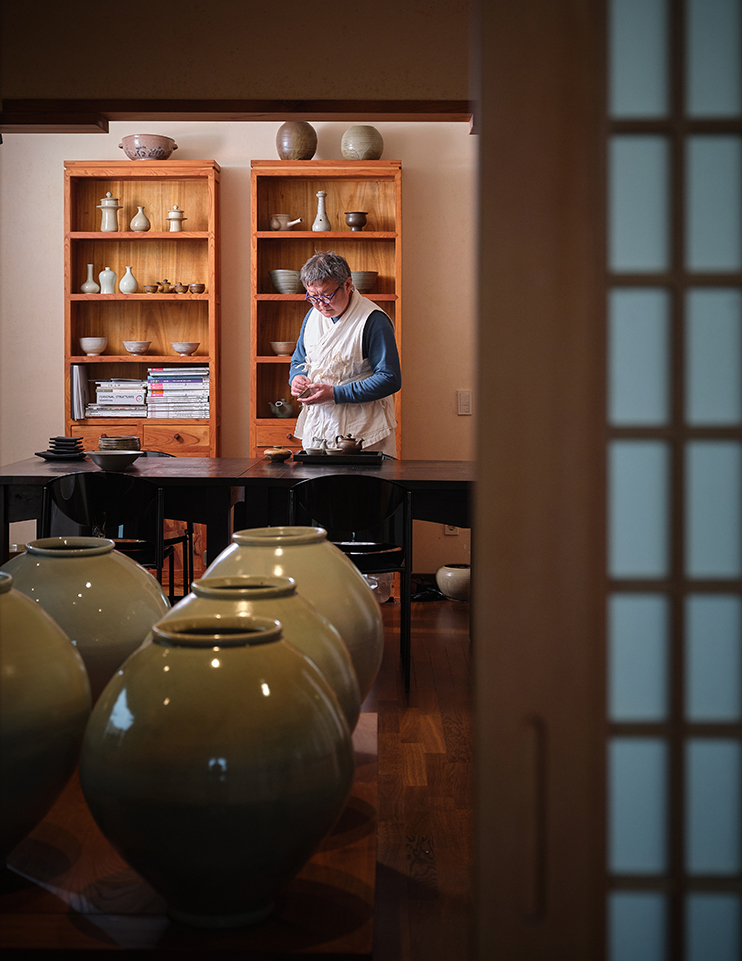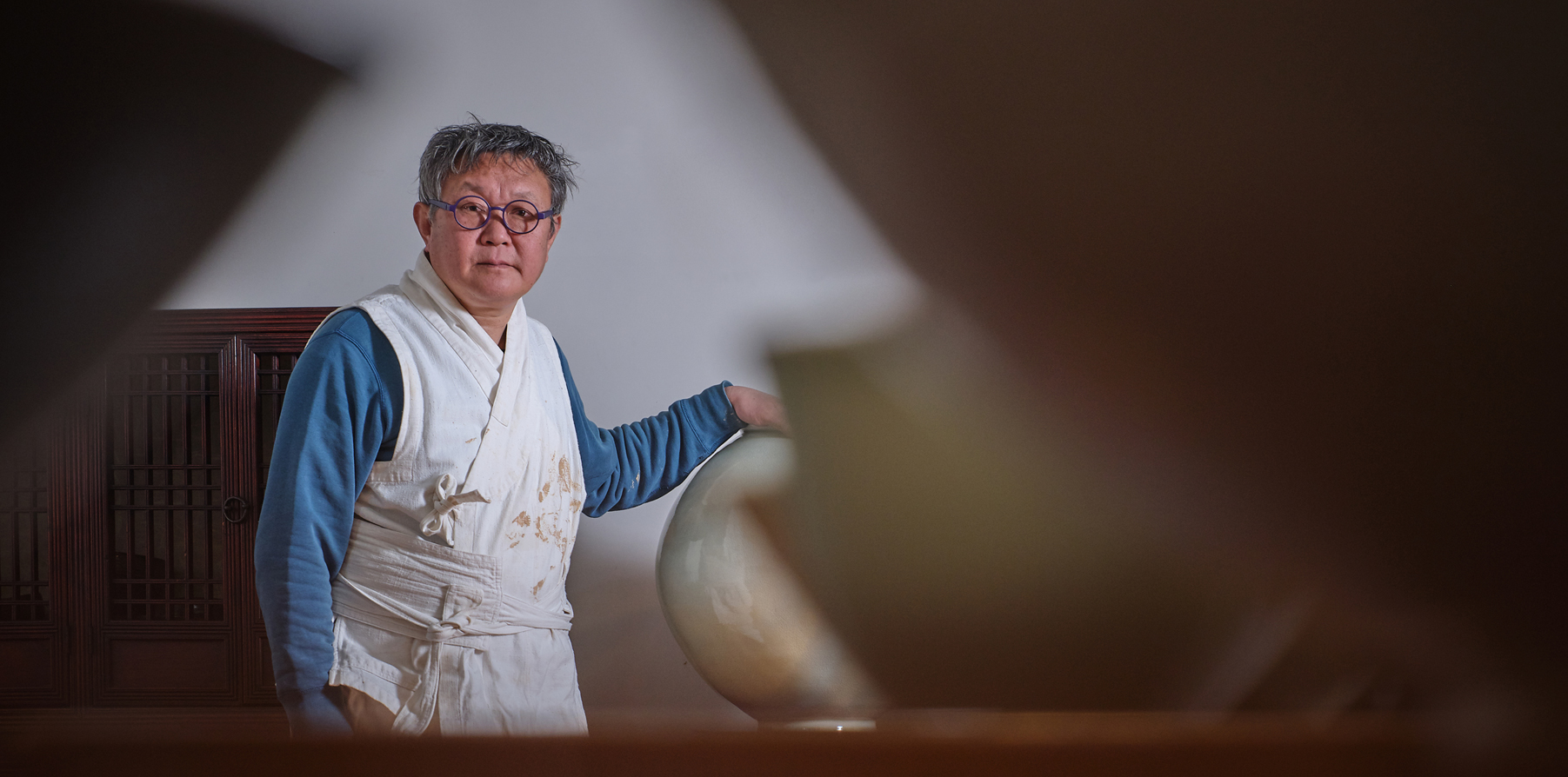Interview
Moon Jar-ring Experience
Ceramics Supreme
For around four decades, ceramicist Shin Gyung Kyun has woken up at 2:30 a.m. to begin his day. Three to four days a week, he and his son stay up for 70 hours at a time to maintain the fire needed to make their creations. The elder Shin’s strict adherence to the original practice of ceramic production preserves the traditional art of making gorgeous moon jars.
Written by• Kim Samuel
Photographed by• Studio Kenn
In 1935, Bernard Leach, dubbed the father of British studio pottery, purchased awhite porcelain moon jar in Korea, writing in an article that owning it was like “carrying a piece of happiness.” Such happiness lives on as the highlight of the Korea Foundation Gallery at the British Museum in London.
Ceramic master Shin Gyung Kyun is the third son of Shin Jung-hee, who was reputed for his replicas of the ceramic bowls used in the Joseon Dynasty’s tea ceremony. Continuing his father’s legacy, Shin Gyung Kyun had his works exhibited at the 2005 Asia-Pacific Economic Cooperation summit in Busan. To prevent the moon jar from going extinct, he visited 300 of 324 kiln sites mentioned in the geographical glossary of The Sejong Chronicles. He finally found traditionally compatible soil near the inter-Korean border in Yanggu-gun County, Gangwon-do Province, where he baked a moon jar in one of the last remaining kilns there.
His works have received accolades worldwide. His moon jars wowed VIPs at the welcoming ceremony of the 2018 PyeongChang Winter Olympics. President Moon Jae-in gave one of them to German President Frank-Walter Steinmeier as a gift. Shin said “the aesthetics of practicality” is why moon jars garner high attention.
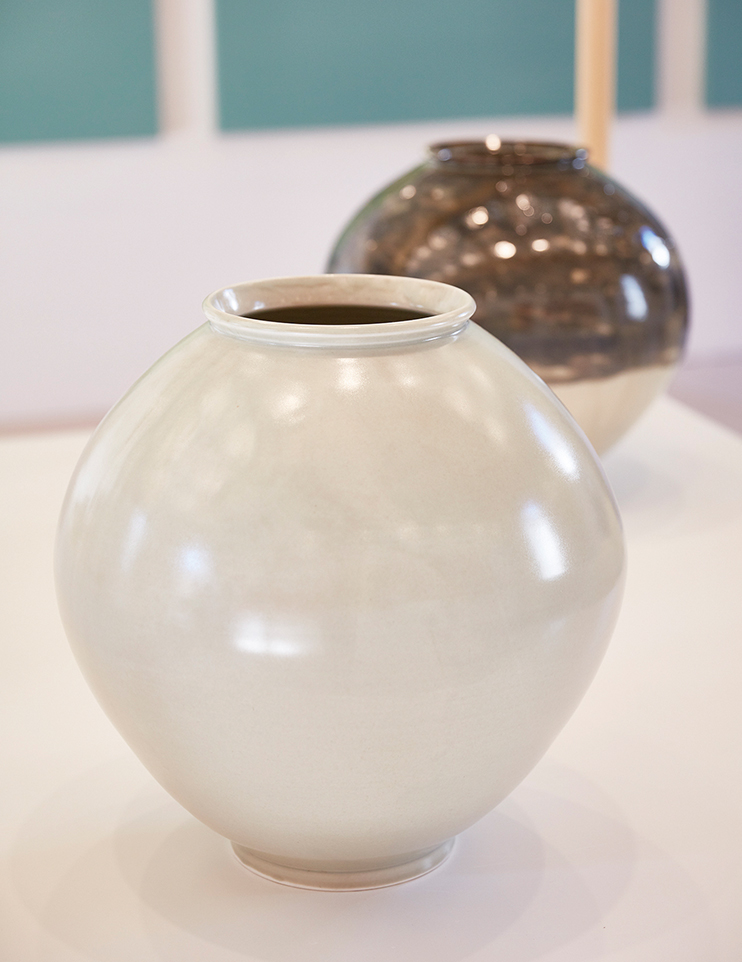
Shin Gyung Kyun’s moon jars have grabbed global attention.
“The greatest quantity of Joseon moon jars was produced under King Yeongjo’s reign (1724-76),” he said. “Two rows of jars were baked in the kiln at once. Costlier cobalt-coated porcelains were placed far from the fire, while plain moon jars were aligned near it. On top of this arrangement that left the jars vulnerable to sparks, their weightiness made them likely to morph in shape under the heat. In other words, their figures were far from perfect. They lived on and weren’t discarded due to their sheer functionality. While baking, they shielded other pottery from the fire and afterwards, they provided ample container room. Moon jars encompass manifold facets of our history.”
Emphasis on Utility
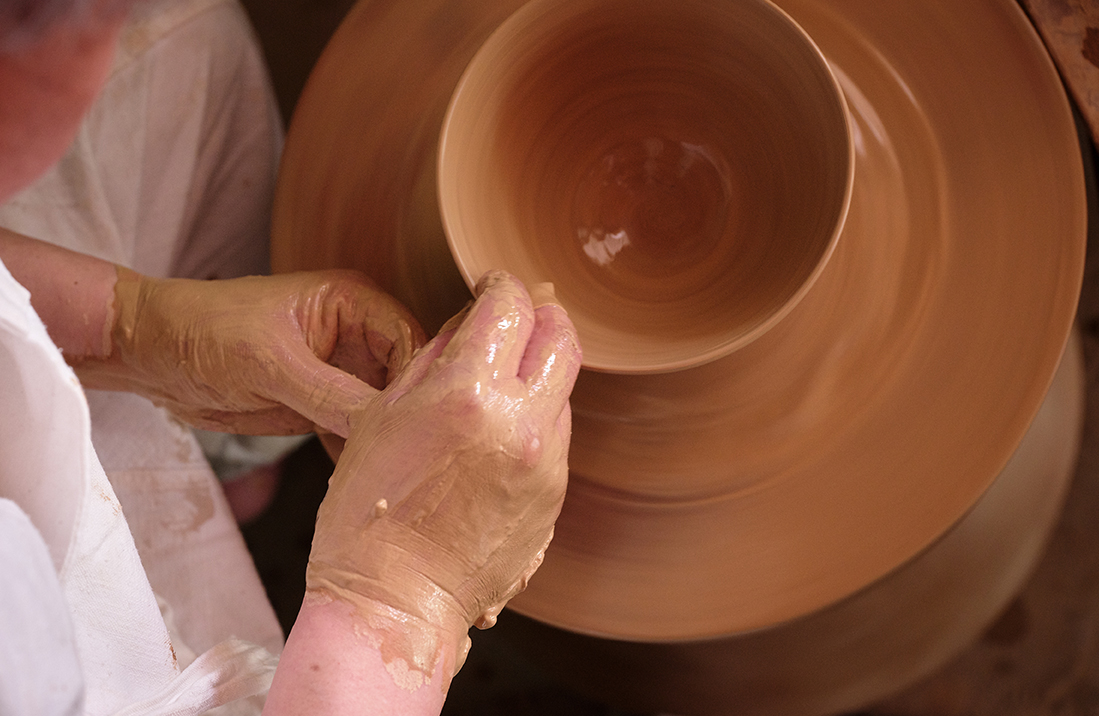
Shin Gyung Kyun crafts a ceramic figure using a potter’s wheel.
At the Venice Biennale and other events, Shin wanted to ensure that visitors could touch his precious moon jars. Their smoothly rounded curves are best felt with both hands from the bottom up. Those who fear the jars could topple over could touch fragments with safely rounded-out edges displayed separately for the purpose.
“Bowls that cannot hold food are of no use. By nature, ceramics exist for utility-driven aestheticism,” he said. “Feel this. Isn’t it as smooth as a baby’s skin? Art is more about coexistence than for aloof display. This is why I put lots of care into creating not just moon jars but crockery and teacup sets. Ceramics are meant to be felt with all five senses. Even costly plates can’t be salvaged once broken. That’s just the fate of the plate.”
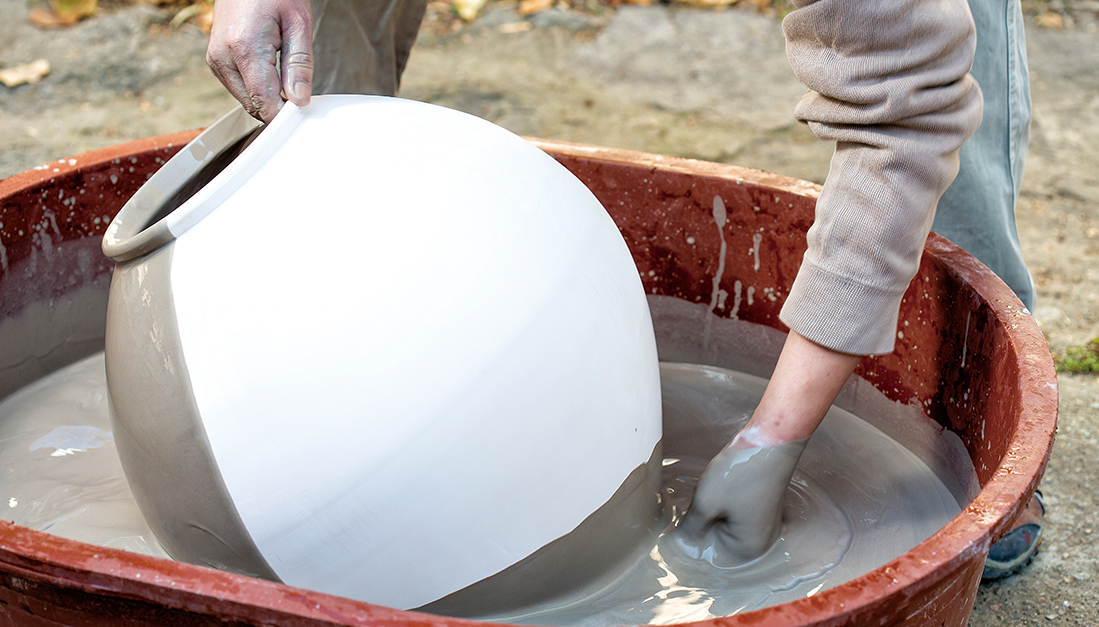
To apply glaze coating as evenly as possible, Shin Gyung Kyun directs his energy onto his fingertips.
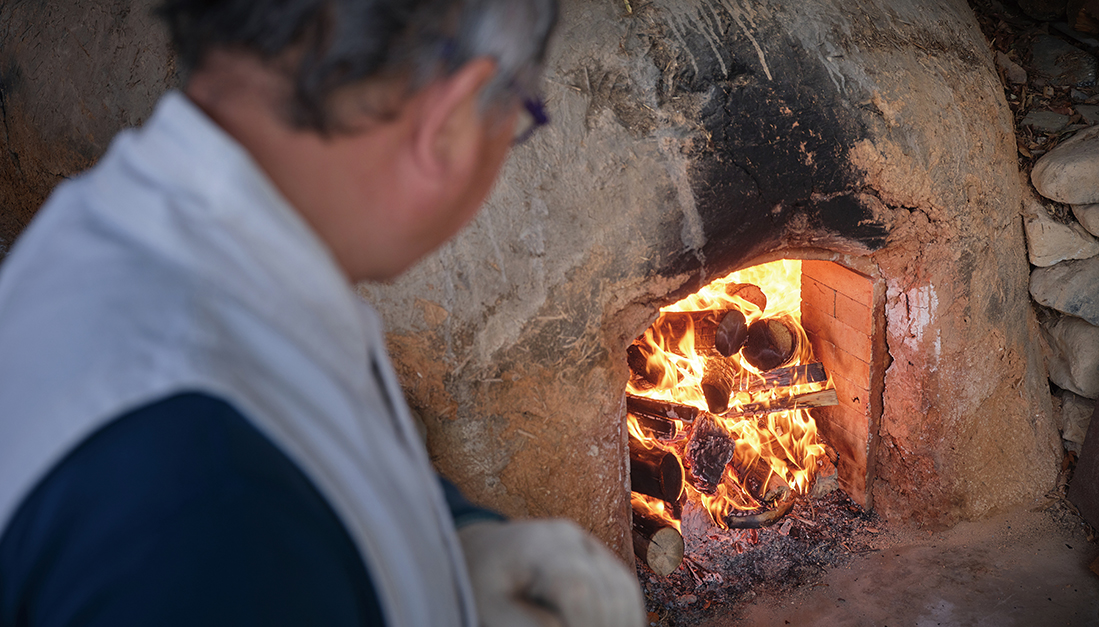
The use of firewood to set the correct temperature of the kiln takes years of experience and practice.
The apparent imperfections of moon jars range from bubbly holes and spark-scarred bumps to irregular fading of color and overall asymmetry in figure. Yet none of these traits take away from their artistic quality. These masterpieces hinge on an artist’s persistent adherence to traditional processes supplemented by a touch of nature’s magic.
“Clay, glaze and kiln are all variants that render perfect duplicates impossible. The only differences are the state and age of soil that are tended to with honed technique. Such efforts are unilaterally geared to better preserve tradition,” he said. “The wooden spinning wheel requiring hefty labor and glaze made of ashes from oak are all integral components comprising the Joseon moon jar. Pine firewood dried for over five years light up the kiln to conclude the process. If I’m lucky, I can salvage one jar out of ten.”
Aesthetically-based Innovation
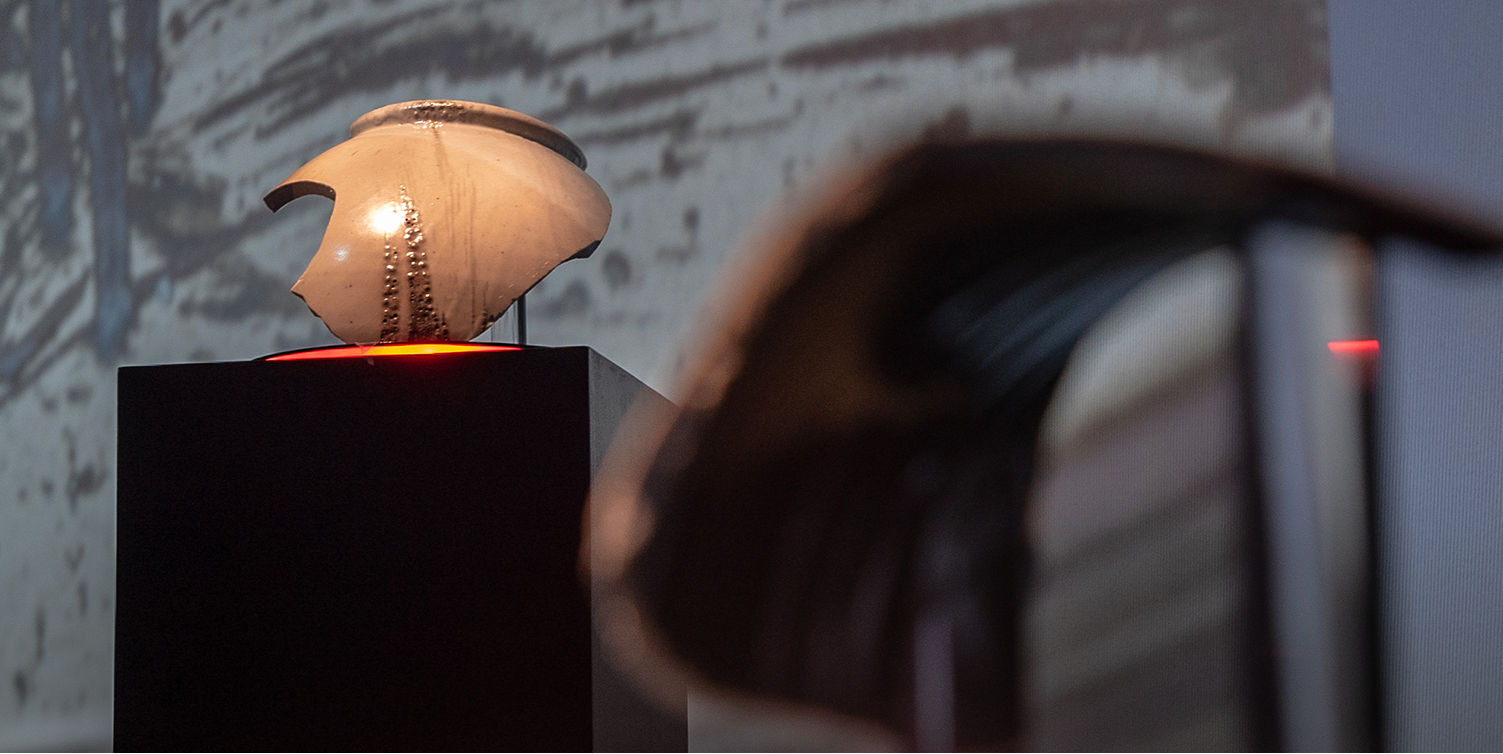
Safely-edged fragments are displayed separately for those heisitant to touch Shin's artworks.
Ceramic artworks are poised to outlive humans as civilization’s longest-lasting artifacts. Soil and fire combine to produce pottery, a feat not commonly achieved even in the Joseon era. Highly advanced technical knowhow was required both then and also now. Today, ceramics are also used as material attached to the airframe surfaces of vehicles going into space.
In late 2018, BBC MediaCity documented in detail Shin’s traditional artistic processes. The rationale for the Media-City team’s choice of subject was the compatibility of ceramics with the Fourth Industrial Revolution.
The crew used sensors to read and compile the ceramicist’s bodily movements and technique as data, as well as the continual state of the kiln’s temperature. Reproduced as a lengthy piece of media art, their documentative outcome expressed how the most basic yet humane elements lie at the core of the tech revolution. Central to the creative effort is a veneration for craftsmanship of the kind Shin’s workmanship and artistry hinge on. The BBC portrayed ceramic textures symbolically via audio and video recordings, and Eastern and Western music were played to represent the holistic process of ceramics creation.
“The future tends to be stereotyped with images of computers. In reality, all things are rooted in tradition. Our ways change but none of their essence does,” he said. “Segmenting tradition yields a most contemporary entity. Tradition and innovation are entwined. There’s a beauty in the obsolete. Without meaning to attribute righteousness to all things traditional, I’m simply doing due diligence to preserve what I was taught by my father to consider invaluable. When I tried a gas-fueled kiln, missing from it were the free-spirited charms of using the wooden kiln. I’m here to provide wholehearted labor based on which nature grants these ceramics the chance to exist.”
